Maypole Re-mixed

Call for young dancers: Maypole Remixed outdoor dance event



Article by Dawn Wakefield with contributions from Finn Collinson
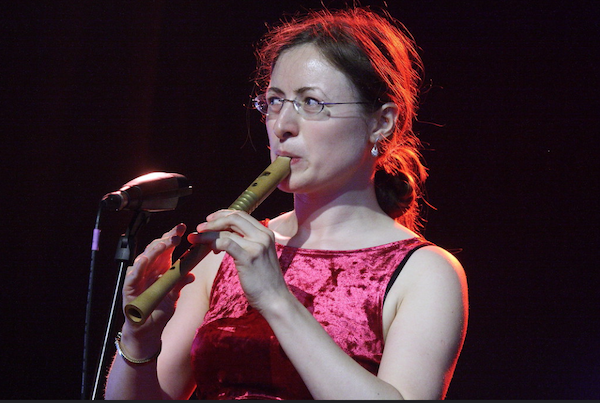 Emily AskewThis article was originally written for the Recorder Magazine which is distributed nationally to members of the Society of Recorder Players (SRP) and also members of The European Recorder Teachers Association (ERTA). As a member of ERTA, I wrote this as an invitation to teachers and students to explore more folk music. Adapting it slightly for Mardles, I realise you are already fans of folk music, but you may need some encouraging to appreciate the recorder! It often has a bad press because of people’s memories of beginner primary school classes on mass descant recorders, often with inexperienced teachers. However do read on as there is much more to the recorder than that! For a start there are different sizes and shapes of recorder: sopranino, descant, treble, tenor and bass, all with their individual beautiful sound qualities and in experienced hands they do sound good. Although this article focuses a lot on printed material, learning tunes by ear is more traditional and is still very much an option, one that was not always made clear in school muisc lessons in the past. Personally though, I find the ability to read music opens up such a wide range of material that I can learn independently, so I would recommend it as a skill, but others I know work more easily by ear. The main thing is to enjoy music and play whatever attracts you.
Emily AskewThis article was originally written for the Recorder Magazine which is distributed nationally to members of the Society of Recorder Players (SRP) and also members of The European Recorder Teachers Association (ERTA). As a member of ERTA, I wrote this as an invitation to teachers and students to explore more folk music. Adapting it slightly for Mardles, I realise you are already fans of folk music, but you may need some encouraging to appreciate the recorder! It often has a bad press because of people’s memories of beginner primary school classes on mass descant recorders, often with inexperienced teachers. However do read on as there is much more to the recorder than that! For a start there are different sizes and shapes of recorder: sopranino, descant, treble, tenor and bass, all with their individual beautiful sound qualities and in experienced hands they do sound good. Although this article focuses a lot on printed material, learning tunes by ear is more traditional and is still very much an option, one that was not always made clear in school muisc lessons in the past. Personally though, I find the ability to read music opens up such a wide range of material that I can learn independently, so I would recommend it as a skill, but others I know work more easily by ear. The main thing is to enjoy music and play whatever attracts you.
Whether you are learning ‘just for fun’ or looking for plenty of varied good tunes in between grade exams, folk music both from the British Isles and further afield provides a rich and rewarding source of varied music. I personally have been both a ‘classical’ and a folk player for many years. I run a monthly folk session in a local pub here in North Norfolk and attend others in the area; I have many happy memories of playing for dance while fronting a ceilidh band on descant recorder, and also playing with various informal groups for Balkan folk dancing.
It’s an odd story, but I think one worth telling, as it has to do with folk music and it concerns musicians who lived and played in East Anglia. 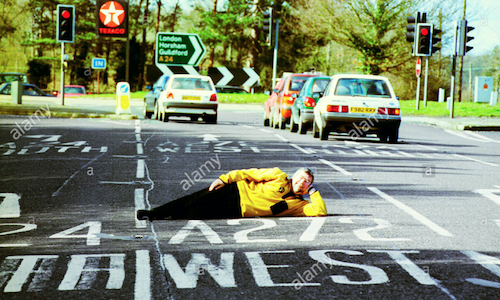 It began in
It began in 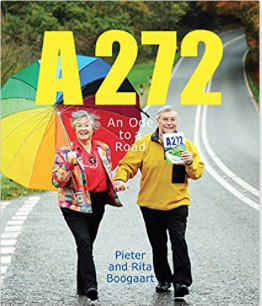 March 2000 when I came across a photograph in a newspaper of a Dutch man lying across a main road in the middle of Sussex, an area I had been brought up in. It turned out that the road was the A272, stretches of which I was quite familiar with. The road starts near Mayfield where my parents used to live, runs through dozens of towns and villages including Newick where ceilidh bands I’ve been in played, and ended up in Wiltshire where I lived for a few years
March 2000 when I came across a photograph in a newspaper of a Dutch man lying across a main road in the middle of Sussex, an area I had been brought up in. It turned out that the road was the A272, stretches of which I was quite familiar with. The road starts near Mayfield where my parents used to live, runs through dozens of towns and villages including Newick where ceilidh bands I’ve been in played, and ended up in Wiltshire where I lived for a few years
The Dutch man lying in the road turned out to be Pieter Boogaart and amazingly, almost incomprehensibly, he’d written a book about this old east-west main road: A272 Ode to a Road. His wife Rita, an art historian, was responsible for the photography. It’s a travel book of sorts, but one like no other I had come across. The pages are divided into different sections - a central part which is the basic narrative travelogue along the A272, and around this, there are notes and photos of places of interest on either side of the road. Pieter's interesting design helps to make this a unique publication.
The Beast from the East was back! Russian snow! Just the weather for a day of dance! There is a saying in Suffolk that “there’s nothing between us and the Urals”. For once local lore and the Met Office agreed: the sun was not to shine on Oxblood Molly’s 4th Day of Dance in Halesworth.
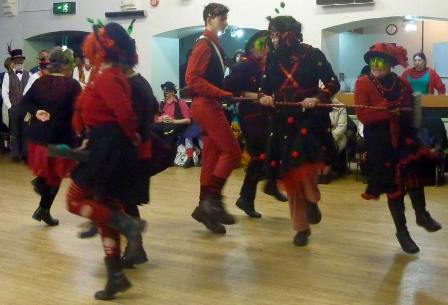
Oxblood Molly (photo John Heaser)
From our Cambridgshire correspondent Les Ray
No 149
Making music is its own reward - after all, it has to be!
I love doing my radio show. And why shouldn’t I? After all, I get to play the music I like, and for most shows I have talented guests who come into the studio to play their music and chat about the passion we share. It’s something I would do even if I hadn’t made the commitment to do it, as it’s always immensely pleasurable. And I know my colleagues at Cambridge 105 Radio feel the same way. Of course it does have its perks, such as receiving great music, namely the CDs given to me by my fellow musicians when I’m out and about locally, the packages in the post and emails with mp3s and download links. As I say, I would do it anyway, but if I do, it certainly isn’t to get rich.
The same also applies to most of the musicians I know, who play their music because they’re passionate about it, not because it’s in any way lucrative. Unless you happen to be Ed Sheeran, sadly there isn’t much money to be made from folk music these days. I’m sure most readers will have been amused by that old saying: A musician is someone who loads £5,000 worth of gear into a £500 car to drive 100 miles to a £50 gig. But many a true word is spoken in jest; if it were just about making money then most of us would have given up long ago.
So why do we do it? For me it’s for the pleasure of seeing a song I’ve written come to life through the contributions of the other members of my band, Red Velvet, through the creativity of the musicians and the emotion and expression of Deirdre, our singer and my musical partner. Then to take it out into the world at gigs, to receive some applause and - hopefully - nice comments. But maybe most of all, it’s hearing that song played on a radio station, perhaps in another country or continent, by another radio presenter not unlike myself.
In short, to misquote Frank Zappa: “We’re not only in it for the money”.
No 150
What is folk (rock)?
A few years ago I recorded a promo* for my Strummers & Dreamers folk show on Cambridge 105 Radio which included the following text: “What is folk? It’s music that tells of ordinary people’s lives, today and yesterday. For me it can be anything from the Carthys to the Clash, from Abba to Zappa, from Greensleeves to Green Onions. What is it for you?”
I was being slightly provocative with my choice of a couple of the artists and songs there, but my point was that folk music is a very broad area of music indeed, and in my show I wasn’t about to start policing its boundaries, as some have done in the past and still do today. After all, music always crosses borders. I suspect that no two lovers of folk music would be able to agree on a precise definition of what it is. If you Google “What is folk?”, you get 120,000 results, and there are probably ten times that number that Google’s algorithms have deemed irrelevant and hidden from your view.
My particular passion is the music of singer-songwriters, and indeed I dabble as one myself with the band that my musical partner Deirdre and I formed a decade ago, Red Velvet. We started out as a duo, and were joined by various different acoustic musicians over the years; in all that time I never had any doubt that our music was folk. We even call ourselves “redvelvetfolk” in our web address, but this is in part to distinguish ourselves from the K-pop band with whom we unfortunately share a name. They, I believe, are not folk, although I’m open to persuasion.
Now, however, we are a five-piece with drums, bass, keyboards and electric guitar, so we’ve starting referring to our music as “folk rock”. A very noble sub-genre of folk itself, of course, whose pioneers were the Byrds in the USA and Fairport Convention in the UK, to name but two. As we apply to play at folk festivals, some welcome our music, while others say it’s “not appropriate for us”. But are they folk festivals? Well that’s another question...
Les Ray
This email address is being protected from spambots. You need JavaScript enabled to view it.
http://cambridge105.co.uk/shows/strummers-and-dreamers/
All My Life’s Buried Here – The Story of George Butterworth
The Diss Corn Hall will be showing this new documentary film about George Butterworth, the English composer, Morris dancer and folk song collector who was killed in 1916 at Pozières, France during the Battle of the Somme aged just 31. In the chaos of war Butterworth was buried where he fell and his remains were never subsequently identified.
The film will be shown on Wednesday 27th February 2019 at 10.30am and at 7.30pm. Following each performance there will be a Q & A session with the director Stewart Hajdukiewicz
A trailer for the film is available at www.georgebutterworth.co.uk
Tickets are available from the Corn Hall box office.
Read more: MORRIS SHORTS - Brief news from the world of Morris - Updated February 2019
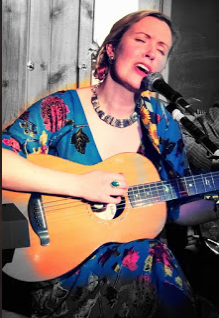 Writing for those who go before- by Holly D Johnston
Writing for those who go before- by Holly D Johnston
Some events in history lend themselves to the written page, the spoken word, the sung story. Songwriters and Storysingers seek these out and the world of folk music opens wide to make a home for these historic moments wrapped in melody. Big events are captured and celebrated in crowd roaring, heart warming, tear jerking song. How often then, do we know about the big, national mover shakers without knowing about the local, cliff face people who made changes right here where we live
Read more: Hearth and Home / Census 1911 - Holly D. Johnston